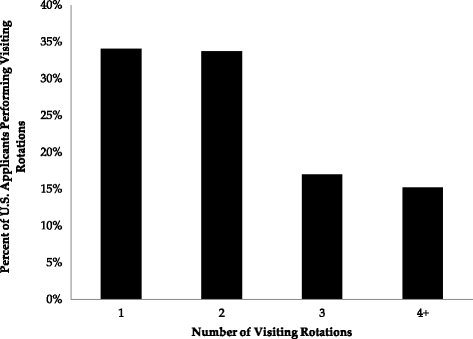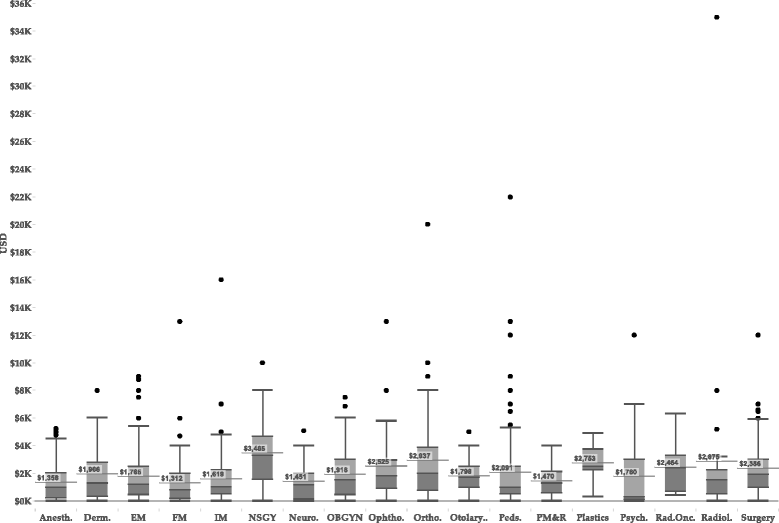The prevalence and cost of medical student visiting rotations
- PMID: 27842590
- PMCID: PMC5109707
- DOI: 10.1186/s12909-016-0805-z
The prevalence and cost of medical student visiting rotations
Abstract
Background: Performance on visiting rotations during the senior year of medical school is consistently cited by residency program directors as a critical factor in selecting residents. Nevertheless, the frequency with which visiting rotations are undertaken and the associated financial costs they impose have not been systematically examined.
Method: Under the auspices of the Electronic Residency Application Service, a survey was sent in March 2015 to all U.S. applicants for residency programs in the 2014-15 academic year. Students were asked how many visiting rotations they performed; the estimated cost of performing each rotation; their perception of their educational value and primary motivation for performing them; and the Match outcome of their residency application.
Results: The survey was completed by 2817 applicants, yielding a response rate of 11.3 %. 1898 applicants (67.4 %) performed visiting rotations: 647 applicants (30.0 %) performed one; 640 (22.7 %) performed two; 322 (11.4 %) performed three; and 289 (10.3 %) reported four or more. When accounting for potential response bias, the true prevalence of away rotators was estimated to be 58.7 % of all fourth-year medical students (95 % CI 54.0-63.4 %). The mean number of rotations for participating students was 2.1. Most students performed rotations equally as an audition for residency placement and for education, with some of the more competitive subspecialties reporting more of an audition experience. The mean estimated cost for performing a single rotation was $958. Thirty-six percent of applicants reported matching at an institution where they had rotated, either their home institution or one at which a visiting rotation was performed.
Conclusions: Visiting rotations are prevalent, expensive, and only partly educational. As such, these rotations may impede optimal use of the senior year of medical school and limited student financial resources.
Keywords: Away rotation; Medical education; Medical school; Residency; Residency application; Visiting student rotation.
Figures
References
-
- Ludmerer K. Time to Heal: American Medical Education from the Turn of the Century to the Era of Managed Care. Oxford, New York: Oxford University Press; 1999.
MeSH terms
LinkOut - more resources
Full Text Sources
Other Literature Sources
Research Materials



